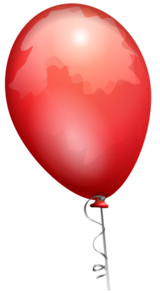Mole: Difference between revisions
J.williams (talk | contribs) No edit summary |
m (1 revision imported) |
||
| (6 intermediate revisions by 4 users not shown) | |||
| Line 1: | Line 1: | ||
[[category:units]] | [[category:units]] | ||
<onlyinclude>A '''mole''', abbreviated as mol, is a measurement of amount used by scientists. One mole is equal to 6.022x10<sup>23</sup> units.</onlyinclude> A mole is an important unit because | [[Category:Done 2021-10-29]] | ||
[[Category:Translated to French]] | |||
[[Category:Translated to Spanish]] | |||
[[fr:Mole]] | |||
[[es:Mol]] | |||
[[File:Red_toy_balloon.png|thumb|160px|Right|Figure 1. A child's helium balloon has roughly 1 mole of helium atoms.<ref>By AJ (Open clip Art Library image's page) [CC0], via Wikimedia Commons. Accessed July 12th, 2018.</ref>]] | |||
<onlyinclude>A '''mole''', abbreviated as mol, is a measurement of amount used by scientists. One mole is equal to 6.022x10<sup>23</sup> units.</onlyinclude><ref>Chemistry LibreTexts. (2018). The Mole and Avogadro's Constant. [online] Available at: https://chem.libretexts.org/Textbook_Maps/Physical_and_Theoretical_Chemistry_Textbook_Maps/Supplemental_Modules_(Physical_and_Theoretical_Chemistry)/Atomic_Theory/The_Mole_and_Avogadro's_Constant [Accessed 11 Jul. 2018].</ref> A mole is an important unit because on the periodic table a mole of a substance is equal to its [[atomic mass]] in grams. A mole is a huge number because if there is a mole of grains of sand, it is roughly the number of grains of sand on Earth, according to [https://what-if.xkcd.com/4/ XKCD whatif]. Moles usually describe the number of molecules or atoms as it allows for an easy conversion between [[kilogram]]s and [[atomic mass unit]]s easily. | |||
Example: Carbon (atomic mass = 12.01) - 1 mole of Carbon weighs 12.01 [[gram]]s. | Example: Carbon (atomic mass = 12.01) - 1 mole of Carbon weighs 12.01 [[gram]]s. | ||
This means that 6.022x10<sup>23</sup> carbon atoms (or molecules) weights 12.01 grams. | |||
{| class="wikitable" | {| class="wikitable" | ||
| Line 10: | Line 18: | ||
Read more about the mole [http://www.unc.edu/~rowlett/units/dictM.html#mole here] or at [http://hyperphysics.phy-astr.gsu.edu/hbase/kinetic/idegas.html#c4 hyperphysics]. | Read more about the mole [http://www.unc.edu/~rowlett/units/dictM.html#mole here] or at [http://hyperphysics.phy-astr.gsu.edu/hbase/kinetic/idegas.html#c4 hyperphysics]. | ||
==For Further Reading== | |||
*[[Molecule]] | |||
*[[Atom]] | |||
*[[Atomic mass]] | |||
*[[Atomic mass unit]] | |||
*Or explore a [[Special:Random|random page]] | |||
==References== | |||
{{reflist}} | |||
[[Category:Uploaded]] | [[Category:Uploaded]] | ||
Latest revision as of 19:47, 20 December 2021

Figure 1. A child's helium balloon has roughly 1 mole of helium atoms.[1]
A mole, abbreviated as mol, is a measurement of amount used by scientists. One mole is equal to 6.022x1023 units.[2] A mole is an important unit because on the periodic table a mole of a substance is equal to its atomic mass in grams. A mole is a huge number because if there is a mole of grains of sand, it is roughly the number of grains of sand on Earth, according to XKCD whatif. Moles usually describe the number of molecules or atoms as it allows for an easy conversion between kilograms and atomic mass units easily.
Example: Carbon (atomic mass = 12.01) - 1 mole of Carbon weighs 12.01 grams.
This means that 6.022x1023 carbon atoms (or molecules) weights 12.01 grams.
| 1 mol | 6.022 x 1023 units |
Read more about the mole here or at hyperphysics.
For Further Reading
- Molecule
- Atom
- Atomic mass
- Atomic mass unit
- Or explore a random page
References
- ↑ By AJ (Open clip Art Library image's page) [CC0], via Wikimedia Commons. Accessed July 12th, 2018.
- ↑ Chemistry LibreTexts. (2018). The Mole and Avogadro's Constant. [online] Available at: https://chem.libretexts.org/Textbook_Maps/Physical_and_Theoretical_Chemistry_Textbook_Maps/Supplemental_Modules_(Physical_and_Theoretical_Chemistry)/Atomic_Theory/The_Mole_and_Avogadro's_Constant [Accessed 11 Jul. 2018].

